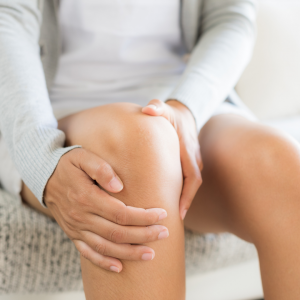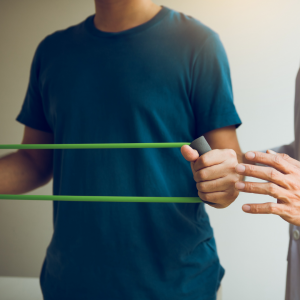Dines Orthopedic provides a broad range of highly specialized Orthopedic Sports Medicine Services. Our team will properly evaluate and treat sports-related and chronic conditions affecting the elbow, knee, and shoulder. Sports injuries are often a result of overuse and wear and tear.
When surgery is required, you can trust that you are in the right hands at Dines Orthopedic. Our surgeons have performed thousands of procedures and improved the lives of countless patients through our comprehensive care.
David Dines, MD
David Dines, MD, has built his practice based on decades of clinical experience and research focusing on the shoulder and related injuries. He is the Medical Director for the ATP World Tennis Tour and has operated on thousands of shoulders throughout his career while publishing many of the most important research articles and textbooks on shoulder surgery.
Joshua Dines, MD
Joshua Dines, MD provides a full range of Sports Medicine services, including surgical and non-surgical treatments for injuries to the shoulder, knee, and elbow. He works with the NY Mets and NY Rangers as well as college athletes, high-school athletes, weekend warriors, and those patients just looking to get back to performing their everyday activities without pain.
Together, Dines Orthopedics offers offices in two convenient locations in New York City at Hospital for Special Surgery and in Uniondale Long Island, offering their patients surgical and non-surgical options in both locations.
Contact Our Orthopedic in Mineola Today!
What Does an Orthopedic Surgeon Do?
An Orthopedic surgeon specializes in conditions that occur in the musculoskeletal system. The musculoskeletal system consists of muscles, joints, bones, nerves, ligaments, and tendons. It’s essential to visit an orthopedist when you have a chronic condition such as arthritis or injury. But what exactly does an orthopedic surgeon do? Let’s take a more in-depth look into what precisely an orthopedic surgeon does and how they can help in need of their services. If you Have questions, contact Dines Orthopedic near Mineola NY. We can answer any questions you may have.
Dines Orthopedic near Mineola NY
Orthopedic surgeons have several primary duties they perform. One of these is treating and diagnosing any conditions someone may be experiencing within their musculoskeletal system. Another task performed by orthopedic surgeons is assisting patients with their rehabilitation. This is done to help patients with their range of motion, movement, strength, and flexibility after their injury. Finally, an orthopedic surgeon will create specific strategies to prevent any injury or chronic disorder within the musculoskeletal system from worsening.
Some orthopedic surgeons specialize in certain areas of the musculoskeletal system. Some examples of these include:
- Hips

- Knees
- Hands
- Spine
- Foot
- Ankle
- Shoulder
- Trauma injuries
- Sports medicine
These are taken into special care by several orthopedic surgeons.
Conditions Treated
There are several conditions that an orthopedic surgeon can help take care of. There’s a wide variety of these conditions, but some examples of them include:
- Chronic disorders like arthritis
- Strains in the muscle
- Bone fractures
- Tendons and ligament injuries, including ACL tears, tendonitis, and sprains.
- Bone cancer
- Certain conditions like carpal tunnel syndrome
- Abnormalities that occur in the limbs such as bowlegs and clubfoot.
- Back and joint pain.
These conditions and musculoskeletal system issues can all be treated by an orthopedic surgeon. There are many treatment methods provided to help treat these conditions. Let’s take a look at some of these treatment methods.
Orthopedic Surgeon Treatment Methods
There are many different varieties of treatment methods and procedures that are provided by orthopedic surgeons. Each of these methods depends on the condition the patient is experiencing. Some states only need conservative treatment. This would require nonsurgical treatment. There are several treatment routines that are provided in nonsurgical. One of these routines includes performing specific exercises your orthopedic surgeon created to improve your flexibility, mobility, and strength.
Immobilization
Immobilization is another method used for nonsurgical treatment. This treatment method would include braces, splints, and casts to help prevent strain to the injured area. Over-the-counter medication is another nonsurgical treatment method that could be provided to patients to relieve swelling and pain. Some examples of these medications are aspirin and ibuprofen. Finally, making lifestyle changes can help with a condition nonsurgically. Some examples would be changing your diet and modifying how you exercise to prevent any strain on the condition.
Surgical Options
If nonsurgical treatment methods don’t help with your condition, you may have to use surgical techniques for treatment. Several surgical procedures are used by orthopedic surgeons to help treat certain conditions. One of these methods is internal fixation. This method places hardware such as nails, pins, or plates that help keep broken bones in place while healing. Fusion is another surgical method used for treatment. Fusion is when some form of internal fixation and bone graft materials are used to connect two bones. Joint replacement is another helpful method that involves replacing damaged parts of the joints.
Soft Tissue Repair
Finally, soft tissue repair is another excellent method that helps repair damaged muscles, tendons, and ligaments. These treatment methods are essential if you are suffering from any musculoskeletal system condition or injury. An orthopedic surgeon can help provide these treatments and find out which treatment method best suits your situation.
Orthopedic near Mineola NY
Orthopedic surgeons help take care of many musculoskeletal conditions with multiple treatment methods for each patient. Dines Orthopedics can help with any injury or condition you may be experiencing. Our Orthopedic near Mineola NY can help properly diagnose your condition and find the proper treatment method to treat it. For more information, check out our website here.

Different Kinds of Orthopedic Surgeries
Orthopedic surgery treats musculoskeletal issues. From broken bones, sprains and strains, joint pain, and arthritis. If you have been dealing with pain or experienced a muscle, tendon, or ligament injury that has not healed, seeing an Orthopedic Doctor Manhattan, might be the help you need.
Seeing an Orthopedic Doctor Manhattan can perform various treatments to help reduce your pain. These treatments can range from physical therapy, providing shots to relieve pain or total joint replacement surgeries. The most common orthopedic surgeries include:
- ACL reconstruction surgery
- Knee replacement surgery
- Shoulder replacement surgery
- Hip replacement surgery
ACL Reconstruction
ACL injuries typically arise during sports, such as basketball, soccer, football, and others that require a lot of quick stops and changes in direction. The constant quick stops and rapid changes in direction can cause the ligament to tear. A few reasons to considering seeing an Orthopedic near Mineola NY for ACL reconstruction are:
- You want to continue playing sports

- Multiple ligaments are torn or injured
- Your knee keeps buckling
- You’re young
Before the surgery, doctors recommend that you undergo physical therapy for several weeks. Pre-surgery physical therapy aims to reduce any pain and swelling and strengthen muscles and restore some range of motion. The surgery itself is completed through numerous small incisions. The damaged ligaments are removed from the area and then replaced with a piece of graft made with a piece of your knee or from a piece of tendon from a donor. Once the surgery is finished, you can leave the hospital the same day. Once you are home from surgery, you must keep the leg elevated, apply ice to the area, and rest it as much as possible while it heals.
Knee Replacement
Knee replacement surgery is not only one of the most common orthopedic surgeries, but 90% of patients who receive this surgery see a drastic improvement in their ability to move around and their pain levels. Some of the reasons to get knee replacement surgery is:
- Severe pain or swiftness that makes it challenging to move around
- Knee pain while resting
- Swollen knee
- Physical therapy has not helped reduce pain in the knee
Prepping for this surgery requires a few steps. The steps include a physical examination, blood work, X-Rays, and you need to fast for 8 hours before surgery. The surgery itself can take 1-2 hours and may require the patient to stay in the hospital for 1-4 days. The surgery can be completed in one of two ways. The first is by making an 8 to 10-inch cut to remove the damaged part of the knee and replace it with an implant. The second option is similar but only requires a 4 to 6-inch cut. An Orthopedic near Mineola NY, will decide which version of the surgery fits your needs best. The recovery process involves physical therapy to strengthen the joint.
Shoulder Replacement
Shoulder replacement surgery is usually the result of the shoulder joint being severely damaged. In the United States, nearly 50,000 shoulder surgeries are performed each year. Some common reasons to receive shoulder replacement surgery are:
- You had a severe shoulder injury in the past, like a broken shoulder
- Severe arthritis
- Torn rotator cuff
- Physical therapy has not reduced pain
Depending on how severe your injuries are, you can receive either a total shoulder replacement, a partial shoulder replacement, or a reverse shoulder replacement. Before receiving shoulder replacement surgery, it is common to receive a physical examination and X-Rays, so the Orthopedic near Mineola NY, can get a thorough evaluation of the joint. Altogether, the procedure takes about 3 hours to complete. During the recovery process, it will be challenging to move your arm, so you will most likely spend 2 to 5 days after surgery in the hospital. Going to physical therapy after surgery will help you get your range of motion back in the area.
Hip Replacement
Hips can be damaged by arthritis, or a fracture, causing you to need shoulder replacement surgery. Hip replacement surgeries are so common in the United States that over 450,000 surgeries are performed per year. Hip surgery is recommended if you are experiencing the following:
- You are experiencing pain while walking or bending
- You are experiencing hip pain while resting
- Range of motion in your hips is limited
- There is no pain relief from physical therapy or anti-inflammatory drugs
The surgery is conducted by cutting the thigh bone, which will help the surgeon gain access to your hip, removes the damaged cartilage, and replaces it with an artificial joint. After the surgery, it is common to spend the next 4 to 6 days in the hospital to ensure that your hip stays in the proper place. It is also suggested to attend physical therapy the day after surgery. You may also need help walking with the aid of a cane or crutches.
Orthopedic Near Mineola NY
If you are looking for more information about any surgeries, as mentioned earlier, or other orthopedic surgeries, you should contact an Orthopedic near Mineola NY. Dines Orthopedic offers its patients a wide range of services. Contact us today to schedule to find out more information.
What Are Different Tendon Injuries?
If you’re experiencing swelling, tenderness or pain around a joint, chances are you have injured a tendon. Different kinds of tendon injuries can occur, so you should know about them so you can be aware of them. However, if you do injure a tendon and need an Orthopedic near Mineola NY, Dines Orthopedics is here for you so that you can move freely without pain.
Tendonitis
Tendonitis is one of the most common kinds of tendon injuries that people sustain. In general, this condition is a type of inflammation and irritation in the tendon that can be caused by a sudden injury or, more commonly, repetitive movement or stress that results in micro-tears.
Stress on tendons depends on many risk factors, such as sports performance, extreme physical effort, the number of repetitive or forceful movements in one’s job, pre-existing conditions like arthritis, and age.
This tendon injury, while most often occurring in the shoulders, elbows, wrists, knees, and ankles, can occur in many places of the body, and the following conditions are just some of the many forms of tendonitis:
- Golfer’s elbow
 Tennis elbow
Tennis elbow- Swimmer’s shoulder
- Pitcher’s shoulder
- Jumper’s knee
- Achilles tendonitis
- Tibial tendonitis
- Peroneal tendonitis
- Flexor tendonitis
No matter the placement on the body, the general symptoms of tendonitis are as follows:
- Pain when moving a joint
- Mild swelling
- Tenderness
If you believe you have tendonitis, you should consult an orthopedic specialist to get a diagnosis. If you are diagnosed with tendonitis, you will be given a treatment plan designed by your specialist for the specific joint affected and your needs as a patient. You may be wondering, “What kind of treatment can I expect for tendonitis?” Here are some potential treatment options for tendonitis:
- Medication: Different medications, such as pain relievers, corticosteroid injections around the tendon, and platelet-rich plasma (PRP) treatment within the affected area, can help reduce tendonitis pain and irritation. These treatments are often used for chronic tendon conditions but help tendonitis as well.
- Physical Therapy: Different exercises and stretches, such as eccentric stretching to mobilize and lengthen muscles, can also help tendons heal as they strengthen your muscles. Many tendon conditions can be treated with physical therapy, and it is considered to be the first option for treatment.
- Other procedures: Other kinds of treatments, such as ultrasound to remove scar tissue, dry needling to stimulate tendon healing, and surgery for more severe tendonitis cases, may be used if physical therapy has not resolved your tendonitis.
It is also important to rest your injured tendon, so you do not strain it further and cause more injury.
Tendinosis
Tendinosis is a more severe form of tendonitis that can result from untreated tendonitis and/or chronic use of a tendon. Instead of inflammation of the tendon from micro-tears, the tendon tissue itself is degrading.
Because tendons need more time to heal than other parts of the body, chronic overuse slows down healing time and leads to tendinosis. The condition can occur for the following types of people:
- Older or middle-aged people
- Those who exercise vigorously/without enough rest in between workouts
- Those who perform repetitive tasks
- Those who left tendonitis untreated
- Those with poor posture
- Those who do not wear proper footwear
- Those who have tight calf muscles
Symptoms of tendinosis that you should watch out for include:
- Pain in tendons while moving or touching them
- Restricted movement and stiffness in the area
- A tender lump in the area (in some cases)
Tendinosis treatment can be determined by an orthopedic specialist who can determine the main goals of treatment, which are usually to prevent further injury, reduce pain, and thicken the affected tendon.
If you think you may have tendinosis, you may be wondering about the kinds of treatments that accomplish these goals. Some

recommendations for tendinosis treatment include:
- Resting the tendon
- Taking breaks from repetitive tasks
- Practicing ergonomics with different keyboards and chairs
- Wearing a brace
- Taking pain medications
- Physical therapy
- Performing light stretches
- Eccentric stretches/exercises
- Massage therapy
- Taking vitamin supplements for collagen production in the tendon
Tendon Rupture
A tendon may tear when there is an extreme amount of pressure or force placed on the tendon. This kind of tendon injury most commonly occurs in the quadriceps, Achilles tendon, rotator cuff, and biceps. All of these areas have different causes for their injury, but generally, tendon ruptures are caused by:
- Trauma to the tendon
- Advancing age
- Excessive pressure
- Steroid injections
- Antibiotics like fluoroquinolones
People with specific diseases, such as hyperthyroidism and gout, and type O blood are also more susceptible to tendon ruptures. General symptoms of a ruptured tendon to look out for include:
- A snap or pop in the area upon injury
- Severe pain
- Immediate or quick bruising
- Weakness in the area
- Inability to move or bear weight in the area
- A deformity in that area
There are also specific injuries that relate to different parts of the body, so knowing these symptoms is important so you can describe them to an orthopedic specialist.
You should go to an orthopedic specialist for treatment due to different treatments being used for the severity of the injury and different ruptured tendon injuries. Your specialist will be able to determine the best course of action for you.
However, if you think that you have a ruptured tendon, you may be curious as to what kinds of treatment you can expect. Here are some typical treatment plans for ruptured tendons:
- Pain medication: NSAIDs like ibuprofen can reduce pain and swell in the affected area. You should ask your doctor about these medications before taking them, especially if you are on a blood thinner. Acetaminophen can also help decrease pain.
- Immobilization: In cases where the function is not severely impaired or surgery is considered risky, your specialist may put you in a cast for at least four weeks. If you show signs of movement without pain or discomfort, you may be able to continue treatment without a cast.
- Physical therapy: Your orthopedic specialist may recommend physical therapy techniques, such as stretches and exercises, to treat your ruptured tendon once the pain and swelling have subsided. Physical therapy helps restore function and strength in the tendon.
- Surgery: In more severe cases, surgery may be the best option. This treatment method is usually necessary if the tendon has completely separated from the bone.
Orthopedic near Mineola NY
Dealing with a tendon injury can be stressful, especially when different types of injuries can occur. At Dines Orthopedics, we can figure out what kind of tendon injury you may have and give you the care you need. If you or someone you know is looking for an Orthopedic near Mineola NY, we are here for you. Please visit our website to learn more about us. Do not wait any longer; contact us today!
Patient Testimonials

We saw Dr. Dines to treat my 16 year old son who is an avid baseball player. Dr. Dines was extremely patient with us each time we were in his office (whether NYC or LI). He spent a great deal of time with us explaining our options and answering any questions we had. He allowed us extra time in his office to discuss treatment options privately with our son. He was very straightforward with treatment options and shared his experiences with other patients with similar symptoms to our son. We would highly recommend Dr. Dines. – Megan M.

After severely injuring my shoulder training Brazilian JiuJitsu and wrestling, and after two (2) miserable failed surgeries preformed by another doctor, Dr.Joshua Dines preformed an allograft reconstruction rotator cuff repair on my left shoulder. The rotator cuff, labrum, and bicep were torn and shredded in what I had been told by other doctors was damaged beyond repair. Dr Dines, after an initial consultation, assured me that he would be able to get my shoulder as healthy prior to my injuries, or at least close to it. Soon after my surgery with Dr. Dines, I knew I was on the path to a full recovery.
It’s been 3 months since surgery, and although I’m not 100%, I’m at least 70 % back to original form, and feel I should be back to full training in another couple of months. This in spite of several doctors telling me I’d never be able to train JiuJitsu or wrestle ever again. In short, any athlete that has a severe shoulder problem, before giving up hope, should consult with Dr Dines.
I thank God I found Joshua Dines as I was just about ready to throw in the towel!! Thank you Dr. Dines please keep up the great work! And one more thing, the Dr.’s staff is professional, kind, and considerate. They are a pleasure to deal with on all counts. – Mike C.

Dr. Joshua Dines, is an excellent orthopedic surgeon. He successfully completed an ACL reconstruction July 2016 on my right knee. Because of his precision work, I was able to get back into regular motion immediately. Before I had the procedure done, I visited with three different surgeons. I chose Dr. Joshua Dines because of his patience, candor, and record. All of the staff (Valerie, Carol, Linda) I dealt with were professional, courteous, proficient, and intelligent. It made the entire process easier! In a good way, I hope I never have to see him again! However, if I need a surgery that’s in his field, I won’t have to do any searching! – Hani G.


